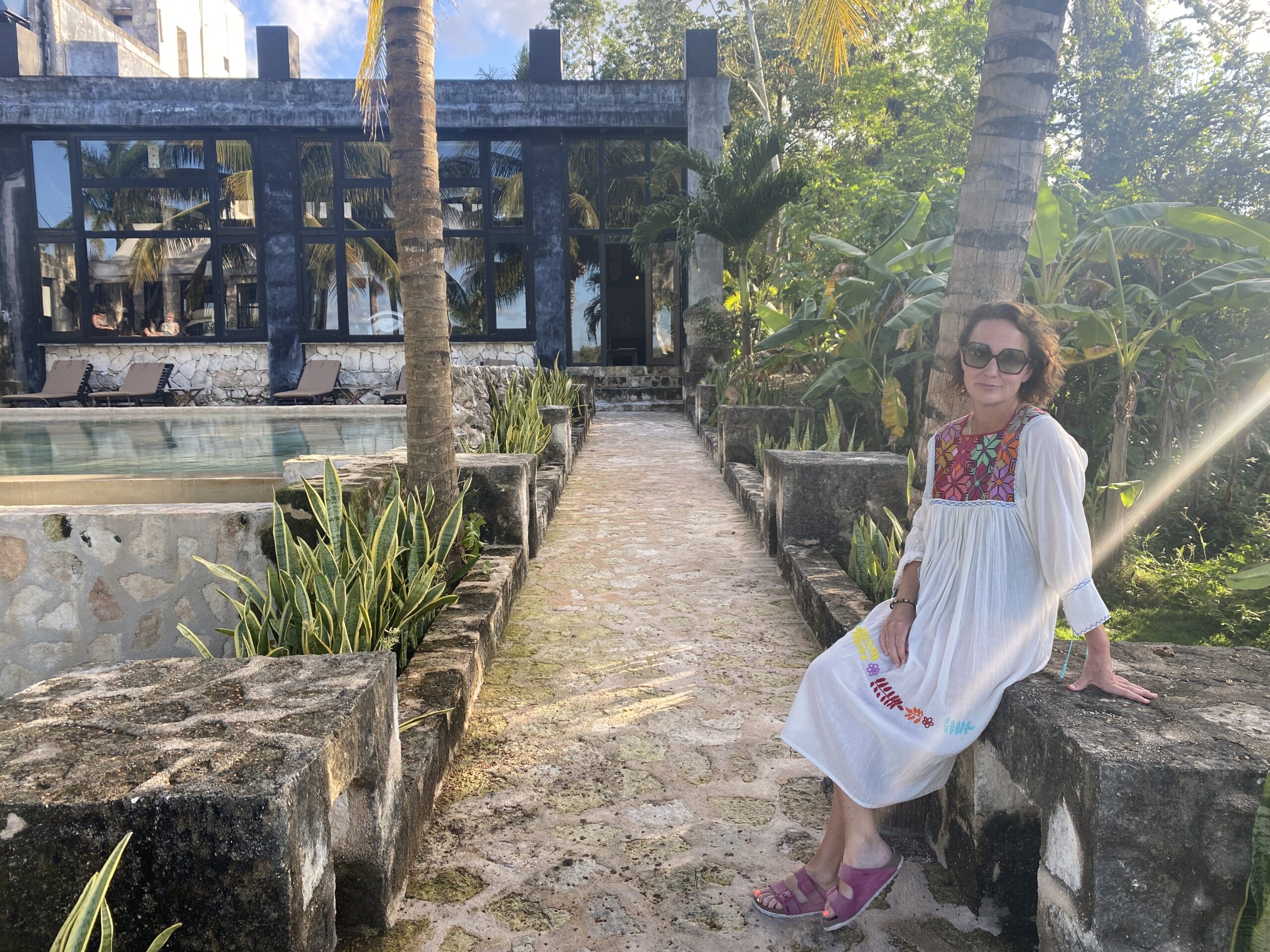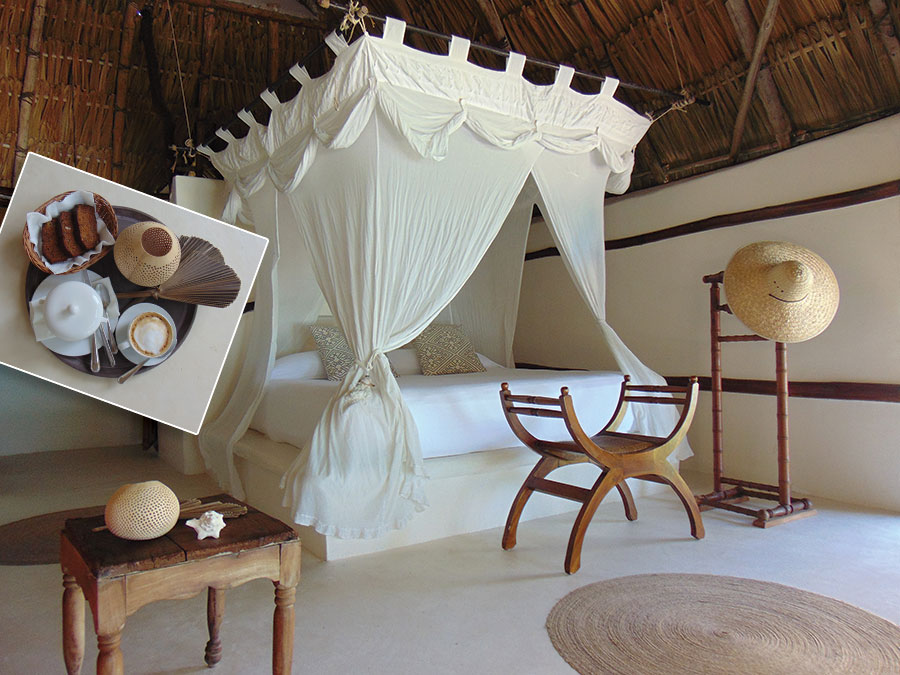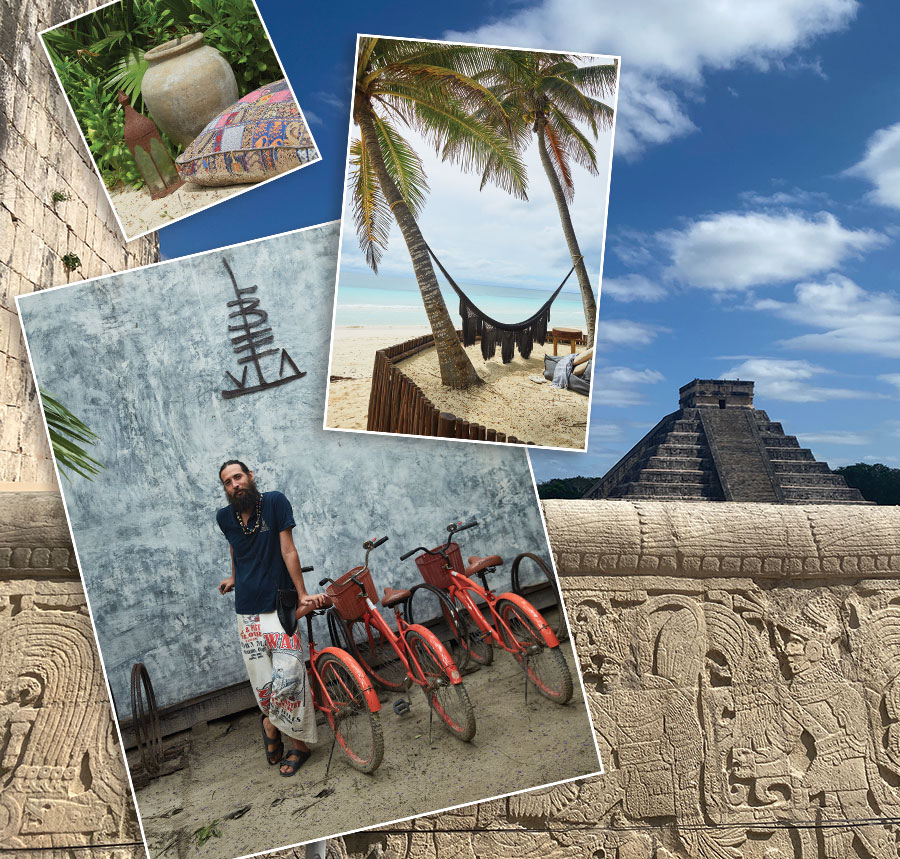Tulum: Getting Lost and Discovering the Magic of the Mexican Coastal Town

Tulum used to be a boho beach town at the end of a dirt track; now it’s getting its own airport. But if you know where to go, the magic is still there. Photo: Luv Tulum
I stumbled across Tulum 30 years ago, as I was backpacking through Mexico’s Yucatán Peninsula with my first serious boyfriend. When I sank my toes in the powdery sand, there were just a handful of places to stay along the 10-kilometre beach, most of them huts with hammocks. There was no electricity, and when the generators were switched off at 10 p.m., we could hear tree frogs singing in the jungle and the sea lapping at the shore as we sat under a canopy of stars. It was the closest I’d ever come to paradise, and I couldn’t get it out of my head or my heart.
I yearned to go back to Tulum, even as I began to hear it dropped into conversation by a glamorous tribe of in-the-know people who eschewed obvious luxury. I finally returned in 2013, and the once-empty beach was lined with eco-chic retreats tapping into the mysticism other travellers had also experienced there. I was desperate to stay at Coqui Coqui, created by Argentinian model and perfumer Nicolas Malleville and his wife, Italian fashion designer Francesca Bonato. It encapsulated the new boho Tulum. The beach hideaway became famous among a style elite (think Jade Jagger, Mario Testino, Amanda Hearst), but I couldn’t afford it. When I wandered in off the beach in my sarong, I was captivated by the barefoot-luxury aesthetic, as well as the rows of Malleville’s perfumes glowing in their glass bottles. I left with Neroli Negro, a scent based on Yucatán’s sour green oranges, and a crush on everything Coqui Coqui.

I realized Tulum had evolved, with simple pleasures giving way to sunrise yoga, vegan smoothies, sweat lodges and beautiful people in even more beautiful kaftans.
In February 2023, I returned to Tulum on my honeymoon, keen to show my husband this magical place. I winced as I passed condo developments and countless hotels, my heart sinking with every passing mile. This time I was staying at Luv Tulum, a hotel owned by a friend from London, who landed here in 2010 – seeking an escape from his fast-paced life as a music video producer – and never left. “I fell in love with the extraordinary natural beauty and interesting people,” he says. He also fell in love with Renata Ballesteros, who, drawn by Tulum’s tranquility, had moved here from Mexico City, and built one of the original beachfront hotels in 2009.
I was relieved to find Luv still had the original Tulum castaway feel, with an unplugged vibe. The rooms are built in the local style, with white-washed walls, simple wooden doors and linen-draped four poster beds. Sea breezes keep you cool, and I could hear the slap and hiss of the waves from our bed. Luv’s rooms are the closest to the ocean on the whole beach. As I sat on our deck and gazed out to the horizon, I could feel the deep calm that struck me on my first visit.

We found it almost impossible to leave Luv’s seductive stretch of sand and palm trees during the day, and would wander sleepily outside in the mornings as the first rays of the sun painted the beach a soft pink. We would then sit in the shade of the palapa bar, sipping on deliciously strong coffee until we were ready for a breakfast of yogurt dotted with tropical fruit and homemade granola drizzled with local honey. Lunch was grilled fish caught off the beach, and soon enough it was time for margarita habaneros rimmed with a blood orange salt.
Luv doesn’t serve dinner, which is lucky as it meant we were forced to go out in the evenings, exiting through a mangrove archway onto Carr. Tulum-Boca Paila, the buzzing street that runs behind the beachfront hotels. We had a reservation at Hartwood, the outdoor restaurant Noma chef René Redzepi once said is the place he dreamed about – it is as central to Tulum’s luxe castaway feel as Coqui Coqui. It came into being after New York chef Eric Werner vacationed here in 2009 and decided to swap the frigid city for the Caribbean, letting the place dictate the style of cooking: Everything is cooked over a wood grill and oven in an open kitchen, lit mostly by candles and kerosene lamps. Rick, a new friend we met at Luv, who owns bars and restaurants in Montauk, N.Y., was a regular here, and we went with him. He ordered (almost) the entire menu: spiny lobster, whole fish, giant shrimp, jicama salad and the legendary short ribs that are slow cooked in the wood oven with an agave glaze. We left hours later, after rounds of mezcal-heavy margaritas, having feasted and laughed all night long.
Coqui Coqui Tulum had sadly closed by the time we visited, so I booked a room at Coqui Coqui Coba Papholchac (one of Malleville and Bonato’s other four properties) for our final night. After a 40-minute drive inland, we saw the hotel’s two pyramid-like buildings, hewn from limestone and connected by a rope bridge, emerge from the jungle. We were led to the top of one of the pyramids, into a room that looked like a film set, with lazily whirring ceiling fans, two woven leather hammocks, botanical prints and a terrace that ran its length.

We walked down the road to the Mayan ruins in the town of Coba. It seemed deserted compared to the hugely popular archeological site of Chichén Itzá, which we had also visited. At its peak, around AD 600-800, Coba had 40,000 residents and more than 6,000 structures: We toured around on bicycles, bumping past ancient pyramids while bright blue morpho butterflies fluttered by.
That evening, as we sat on our terrace playing cards, a symphonic chorus of birds called from the surrounding jungle, which is home to keel-billed toucans with vibrant red, green and orange beaks; bright-green parrots; yellow flycatchers and cinnamon hummingbirds. My husband looked at me in awe as lanterns were lit in the courtyard and in apertures along the stairways, saying, “Where have you taken me?” I watched the mystery and the wonder of the Yucatán sink in as howler monkeys made their spooky calls and the smell of firewood and myrrh-like copal drifted through the air. I felt restored, and relieved that, between Luv, Hartwood and Coba, the Yucatán I fell in love with was still here.
RELATED:
Where to Eat, Shop and Explore in Tulum, Mexico
Living the Island Life in Holbox, a Slice of Heaven Off the North Coast of Mexico